Donovan R. Walling's Blog, page 7
September 26, 2011
Architecture as Sculpture

Architecture often has a sculptural quality. Frank Gehry's Disney Concert Hall in Los Angeles, Frank Lloyd Wright's Guggenheim Museum in New York City, and Le Corbusier's Notre Dame du Haut Chapel at Ronchamp in eastern France spring to mind as Modernist examples. But in the American Southwest stands an equally impressive, though spatially more modest structure, older than these but still archetypically Modernist in its form and line: the San Francisco de Asis Mission Church in Ranchos de Taos, New Mexico.
Built between 1772 and 1816, this adobe church was constructed by Franciscan Fathers, whose patron was St. Francis of Assisi. It is located southwest of Taos, an artists' colony in the high desert of northern New Mexico, near the Taos Pueblo, the 1,000-year-old settlement of the Taos, or Northern Tiwa, Native American Pueblo people. Nearby the Sangre de Cristo mountains provide a backdrop.
What distinguishes this church sculpturally is not its entrance, which is fairly conventional, but its rear structure. The asymmetry of the exterior of the apse (in conventional terms) and the use of stunted, lump-like buttresses give the building a decidedly Modern sculptural appearance, much as some ancient Chinese ceramics, say, from the Shang Dynasty (1600-1100 BCE), look as though they might have been thrown yesterday.
Declared a National Historic Landmark in 1970, the mission church was recognized much earlier as something special. It has been captured as art by the likes of Ansel Adams and Paul Strand (photography), Georgia O'Keeffe (painting), and Gustav Baumann (color woodcut). O'Keeffe, in fact, called the church "one of the most beautiful buildings left in the United States by the early Spaniards."
One would be hard-pressed not to be captivated by this early example of adobe architecture. I know I was. So on a recent visit to New Mexico, I also found myself digitally capturing the image of this church, as shown above. The combination of adobe, blue desert sky, and the influences of sculpture, architecture, and religion made the opportunity to record an impression irresistible.

September 12, 2011
Finding My Father
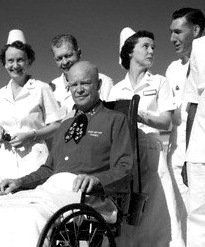
I find my father in museum exhibits. Dad and I were not especially close. He was, at least for me, easy to admire but hard to love. Maybe that's why, since his death in 1997, I keep looking for him.
In 1955, while visiting Denver, President Eisenhower suffered a heart attack during his first term in office. He recuperated in Fitzsimons Army Hospital in the suburb of Aurora, and my father was one of his caregivers. Once Ike was well enough, there was a photo shoot on the hospital roof. My father can be seen in many of the photos, standing in the background: hair almost black, hawk-like profile. He was thirty years old, a master sergeant, and already a veteran of two wars as a combat medic.
The photo shoot is how I find my father in museums. In the Smithsonian's American History Museum I've even found a film clip from that day.
Recently I took a long-postponed road trip to Abilene, Kansas, to the Eisenhower Center. There in the museum, sure enough, was a tiny display of the 1955 photo shoot. And there was my father, forever young, the image of him I always carry in my mind from childhood. It's rare to find my father credited—or any of the other bystanders, for that matter. But I know who they are. (In the photo above, Dad is on the far right, sharing a moment with First Lieutenant Lorraine Knox, one of Ike's nurses.)
Apart from his military career, I guess I'm less sure who my father really was. There were swaths of time when he was away on duty throughout my childhood and adolescence, and somehow the time never got made up. I sometimes feel as though he was a stranger who just happened to live with us now and again. He wasn't, of course. But between him and me, there was a disconnect. He even missed the wedding of my wife and me because he was overseas, serving a tour of duty in Vietnam during that war.
A couple of days after Abilene, my road trip took me to Denver. It seemed reasonable to look at where our family lived in the mid-Fifties. The Army post at Fitzsimons has been closed since 1999, and much of the old military facility has been bulldozed. But the soaring old hospital remains, now repurposed as a centerpiece of the sprawling and ever-expanding University of Colorado Anschutz Medical Campus.
Originally Army Hospital 21, as it was first called, the building where that long-ago rooftop photo shoot took place was formally dedicated in the autumn of 1918. In July 1920 the facility was renamed the Fitzsimons Army Hospital after Lt. William T. Fitzsimons, the first U.S. casualty in World War I.
Little else of the Army post remains, except for the original gates and the post chapel. Long gone are the housing areas where Army brats like me lived, played, and went to school a half-century ago. Indeed, my sister was born at Fitzsimmons Army Hospital. According to what I've read, the Eisenhower Suite, where Ike recovered in 1955, has been restored to that period. I didn't try to visit it. I wonder if they have any images of the photo shoot. If so, I bet I'd find my father in them.

September 5, 2011
On the Road Again
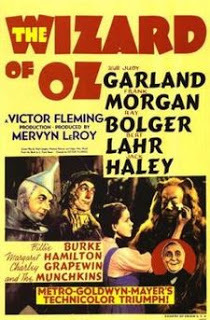
As I was contemplating a road trip that would take me through Indiana, Illinois, Missouri, and Kansas out to Colorado, then down along the Rockies to New Mexio, and back through Texas and Oklahoma, I was struck by a desire to recall some of my favorite road movies. A Google search will yield other folks' top 15 or 30 road pictures, so why not drive down my own memory lane. I'll limit myself to five:
The Wizard of Oz (1939). Four unlikely friends come together with the speed of Facebook, joined by a common need to seek the help of a wizard to cure their woes. Who says you can't dance down the road instead of drive—and in ruby slippers? Judy Garland, Ray Bolger, Jack Haley, and Bert Lahr are the friends: a Kansas girl, a scarecrow, a tin woodman, and a cowardly lion. And a yellow-brick road.
Road to Morocco (1942). This is my all-time favorite among the Bob Hope-Bing Crosby road pictures. Dorothy Lamour co-stars, of course, and Anthony Quinn puts in an appearance. It was topical in 1942 because of the Operation Torch landing of American troops in Morocco. I wasn't born when this film hit theaters, but I did see Dorothy Lamour in the late 1960s, when she was on the road in the title role of a touring production of Hello Dolly. And who says you have to drive a car when a camel will do?
Paper Moon (1973). Ryan and Tatum O'Neal, father and daughter actors, portray a con man and his, perhaps, daughter, trying to make their way in Great Depression-era Kansas. Moze Pray (Ryan) is Bible seller just one step ahead of the law. Addie (eight-year-old Tatum) is the orphan of a prostitute and so might be Moze's daughter. Along the road they pick up a stripper (played by Madeline Kahn). Peter Bogdanovich directed, and the film features the song, It's Only a Paper Moon, by Billy Rose, Yip Harburg, and Harold Arlen. Among the Oscars was one to Tatum O'Neal for Best Supporting Actress, the youngest person to win an Academy Award.
The Adventures of Pricilla, Queen of the Desert (1994). Disco isn't dead in this celebration of drag in the Australian desert, as an aging transsexual (played by Terrance Stamp) and two drag queen friends drive a broken-down bus across the outback for a gig at a casino and, ultimately, to reunite "Tick" Belrose (Hugo Weaving), a gay father, with his eight-year-old son. The movie was translated into a Broadway musical—a costume and music extravaganza—that I saw in New York City in July this year. Great fun! The film has more substance. And it won an Academy Award for Best Costume Design. Go figure.
Little Miss Sunshine (2006). A dysfunctional family hits the road to a children's beauty pageant with an odd-ball cast that includes Greg Kinnear, Steve Carrell, Tony Collette, Paul Dano, Abigail Breslin (as the beauty girl), and Alan Arkin (as the grandfather who dies along the way). Disaster and hilarity ensure. The film earned a Best Picture nomination and three others, and won two Oscars. One went to Alan Arkin for Best Supporting Actor. An unheralded start is the Volkswagen minibus in which the family travels. A friend owned one in Germany in the 1980s; that yellow van also figured in a few memorable road trips.
Road movies are invariably tales of quests, some serious, some silly. What are your favorites?

August 29, 2011
Verging on Darkness
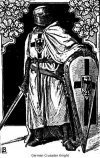
Recently I read a couple of Ariana Franklin's Mistress of the Art of Death novels, which are set in the late 10th century during the reign of England's Henry II, who is best, if unfairly, remembered for the martyrdom of Thomas à Becket, his "meddlesome" Archbishop of Canterbury. King Henry is less remembered for his more important accomplishments, including the modernization, for the 1100s, of England's medieval justice system. For example, he instituted jury trials to replace trial by combat at a time when, on the European continent, trial by inquisition and torture were still the norm.
It should be remembered that the late 10th century marked England's emergence from the darkest of the Dark Ages into what is commonly called the High Middle Ages (11th to 13th centuries) and thus two to three centuries before the Renaissance, the acknowledged rebirth of classical learning and precursor to the modern ascendancy of rationality over superstition leading to the next period, the Enlightenment. In the 1170s, when Franklin set her first novel, the Enlightenment was a long way ahead and even the rudiments of science were at war with medieval superstition and primitive religiosity.
As I read Franklin's interesting, well-research tales, I was struck by the similarities of that period to our own. American democracy was born in the Enlightenment, also called the Age of Reason, a period that reached its height in the 1700s. America's founding generation—Washington, Jefferson, Madison, Monroe—were all products of the Enlightenment and so infused our fledgling democracy in the 1770s with ideals and principles grounded in humanism and scientific reason.
We should not mistake today's radical "conservatives" as desiring to conserve this foundation. Indeed, the conservative party in modern American politics has all but disappeared because it has been co-opted in large measure by a radically reactionary faction that seeks not to turn back the clock to America's democratic roots but, rather, to take this nation back, both figuratively and literally, to the Dark Ages, to superstition and errant, simpleminded religiosity.
Adherents of this reactionary, proto-fascist (to use a term I learned first from Henry Giroux) worldview espouse Christianist ideology to lure the unsuspecting and the uncritical in the same manner that radical Islamists lure the unsuspecting to their reactionary cause. Recall George W. Bush's application of the laden word crusade to the Iraq War before his handlers and propagandists hushed it up. Neither -ist ideology resembles Christianity nor Islam in any true religious sense; they are political ideologies cloaked in religious garb. Pat Robertson, Sarah Palin, and Michelle Bachmann offer prime examples of this faction's proponents.
Similarly, political ideologues of this ilk are not trying to restore, but to destroy, American democracy by advocating a return not to the Enlightenment principles of our founding era but to the medievalism that preceded it by several centuries. Rick Perry's recent statements about the need to rewrite our Constitution are examples of this movement.
Today's cultural and political struggles between democratic reason and superstitious radicalism in the United States bear uncanny similarity to those that marked 10th century England. If thinking men and women are not informed and proactive on behalf of enlightened American democracy, we will be dragged into an American Dark Ages, a prospect that is not as remote as many might like to believe.

July 31, 2011
Movies Go Broadway
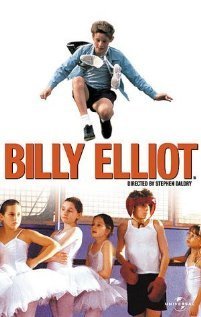
Used to be, when a Broadway play was a hit, sooner or later someone would make it into a movie: Gypsy, My Fair Lady, Sound of Music, and so on. But somewhere along the way, the trend got flipped. Broadway composers, producers, and their ilk began rummaging in the movie vaults for hits on screen to transform into hits on stage. Some used their own vehicles. For example, Blake Edwards and wife Julie Andrews took their hit movie, Victor, Victoria, and turned it into a stage musical, which I was fortunate to catch in Chicago before it moved to Broadway. Mel Brooks took his movie, The Producers, and made it into a wildly successful stage musical; although when he tried to repeat that success with Young Frankenstein, it was less than stellar.
On a recent trip to New York I was struck by how many of the hit musicals now tapping across the Broadway boards began life as movies—a majority, it seemed, though I may be overestimating. Billy Elliot was a sheer delight on stage. I'll remember it better than the movie. It's a great dance show. Pricilla, Queen of the Desert was pure costume fluff, not particularly better than the movie but good for a fun afternoon escape into an air-conditioned theater when the heat wave temperatures soared past the 100-degree mark. Of course, it's always fun to hear again those great gay disco anthems, such as "It's Raining Men."
The flip-flop from Broadway-to-screen to screen-to-Broadway probably has a lot to do with conservative economics, the need to shepherd finances and bet on, presumably, a sure thing: hit movie equals hit stage vehicle. But there are no guarantees. Still, it's not a bad bet and probably better than risking money on mounting an unknown show that might, or might not, catch the theater-going public's fancy.
And yet I am troubled by this trend, for its lack of creativity, its lack of leadership in the arts, its pandering to the need to make a buck above all else. Going to a Broadway show today is less about having a new experience and more about seeing merely a new interpretation of a prior experience. That said, isn't that what we've been doing with Shakespeare for the last 400 years or so?

June 9, 2011
The Problem with Tours

With an informed docent who isn't on a tight schedule, a tour can be great: full of good information, colorful tidbits, and fascinating insights. Unfortunately, many tours are rushed and cursory, seemingly with the main objective of getting as many tourists through the site as quickly as possible and for the highest admission fee the traffic will bear. I was reminded of this on a recent tour of Neuschwanstein, King Ludwig of Bavaria's famous fairytale castle in southern Germany.
Granted, I have been to Neuschwanstein in the past, read up on it, and so may be better informed than the average tourist. Still, I was dismayed at how little our group actually saw, how little was explained (and, given that it was an English-language tour, how little English our guide actually spoke), and how quickly it was all over and we were dumped, of course, into one of the souvenir shops ubiquitous at famous sites. When I've huffed my way up the mountain, eschewing horse-drawn carriage or bus transportation, frankly, I expect more from a tour of one of the world's most famous, if rather silly, landmarks. A twenty-minute walk-through just doesn't cut it.
I well recall a few years ago taking a walking tour of Savannah, Georgia's well-known residential squares. In this case, the guide was a young man who'd graduated from SCAD (Savannah College of Art and Design) and so loved his adopted city that he'd stayed on to write a book about its architectural history and to give tours. My partner and I booked the tour online, and the return email designated a square in which to meet the ten-person tour group, ending with the guide's description that he'd be "the guy with the clipboard." What a delightful tour—and very informative and interesting.
Savannah's residential squares probably aren't as famous as Neuschwanstein. But I would suggest that that's all the more reason a tour of King Ludwig's castle ought to be at least as informative and interesting, as colorful and nuanced, as a walk in Savannah.

March 23, 2011
Replication, Interpretation, and Insight

Replication and interpretation have always been useful learning tools. As an art student, I remember being asked to attempt a copy of a famous painting of my choice. The idea was that I would thereby be forced to look more closely at an artist's work than I had ever looked before. As parents, we teach our children first to copy us. Later, when they are confident in their learning, they interpret; they make the learning their own.
And so, one recent sleepless night I decided that it would be an interesting exercise to take a popular psalm and, rather than meditate on it, attempt to rewrite it—that is, to render an interpretation in a different form that would convey my own sense of meaning. I chose perhaps the best-known biblical song, the Twenty-Third Psalm. Neither this exercise nor the choice of this verse was novel. This psalm has been recast in many forms over many centuries.
For my purpose, I decided to use another song form, the sonnet, combining a traditional Shakespearean rhyme scheme with a free-meter line cadence. I share the result below, not because it is particularly artistic—indeed, it's probably no better than the copied painting I produced in student days—but because it illustrates, again, the value of closely examining any artwork, whether the expression is visual, auditory, or literary. I found doing so insightful. Thus, with apologies to William Shakespeare:
Divine Presence is my guide
and so I need nothing more.
My soul is like still water inside
that Presence will restore.
I am led to walk an upright path,
feeling the Divine within me,
and I do not know fear or wrath
even though, at times, I cannot see.
Among worldly shadows of gloom,
Divine Presence wipes away fear.
I feel no foreboding sense of doom.
Presence-filled, I hear, I hear…
O my soul, I know that heart, that hand;
and thus, now and forever, I understand.
Doing this exercise did not induce sleep for me. (It may or may not have a soporific effect on you, Dear Reader.) But I did find that it caused me think more deeply about the meaning I took from the Twenty-Third Psalm than I might have done by simply reading it.

February 5, 2011
Inspiration and the Iconic
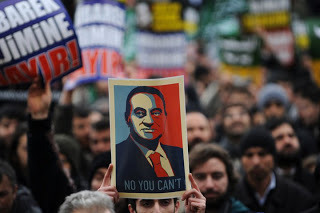
During the 2008 U.S. presidential campaign, an image of Barack Obama designed by artist Shepard Fairey claimed almost as much attention as the candidate. In the image, a stylized graphic in shades of red, blue, and white, Obama gazes upward. Often, riding just below the knot of his necktie, a word was included: progress, change, hope, etc.
The Obama image became instantly iconic, though it flowed from a long-established Social Realism heritage. After the election the National Portrait Gallery acquired a mixed media stenciled version. Permutations of the image using other prominent figures from the political and entertainment fields proliferated. Some were outright parodies, for example, with Obama's "hope" replaced with "hype," or the faces of Obama's opponents Sarah Palin and John McCain with "nope."
The image sparked a controversy when the Associated Press claimed that Fairey's inspiration was taken too literally from a copyrighted photograph snapped in 2006 by freelance photographer Mannie Garcia. Fairey sued for a declaratory judgment that his adaptation of the original image was fair use. The legal issues eventually were settled out of court.
In the political realm the iconic elements continue to be used. Witness most recently the anti-Mubarak poster (at right, posted on Facebook by my friend Alex Goebel, a German public radio correspondent stationed in Morocco), which is being carried during a protest to end the 30-year rule of President Hosni Mubarak in Egypt.
Fairey's powerful graphic embodies the essence of any icon, a bold simplicity that renders the message instantly comprehensible. And so the form can be transmuted, whether for serious or humorous intent, without diminishing its power to communicate.
Inspiration in terms of political art arises from the artist being particularly attuned, often subconsciously, to signals and currents in the culture that shape and are shaped by a political dynamic. Translation of that inspiration into imagery, in the case of Fairey's Obama portrait, can produce the iconic, which then takes on a life of its own.

February 3, 2011
Context Versus Correctness
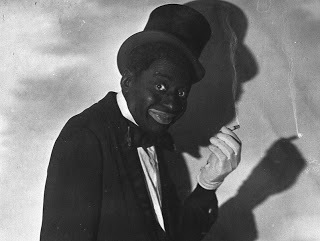
A wintry day recently gave me time to rummage in my collection of old-time radio shows, and my hand came upon a vintage episode of Amos and Andy. The program, a sitcom set in the black community, has been a source of controversy almost since it was created, written, and voiced by Freeman Gosden and Charles Correll, two white men, in 1928. The show was wildly popular on radio in the 1930s and was influential on programs that followed it. It even transitioned to television in the 1950s, although with black actors (who were instructed to sound as much like Gosden and Correll as possible). The last radio episode aired on November 25, 1960.
In the context of an era when racial segregation was the norm, the show was accepted and acclaimed; though even in those days it was not without controversy. A protest was launched in 1930 in an article by the preacher of the African Methodist Episcopal Zion Church, who claimed that the program singled out lower-class characters. This theme was picked up by the Pittsburgh Courier, then the nation's second largest African American newspaper, but the NAACP declined to join the protest.
Much of the sustained controversy at the root of context versus correctness stems from white actors portraying other races, which was common into the second half of the 20th century. For example, in the popular series of Charlie Chan movies, the Chinese American detective of Earl Derr Biggers' novels was played primarily by two white actors, Warner Oland and Sidney Toler, in the 1930s and 1940s. Almost to the present day a number of white actors have portrayed Asian characters, including Alec Guiness, Jennifer Jones, Boris Karloff, John Wayne, Mickey Rooney, and David Carradine to name only a few. Linda Hunt won an Oscar for playing Billy Kwan in the 1982 film, The Year of Living Dangerously.
Yellowface, as non-Asians playing Asian was called, survived the political correctness test longer than blackface, although even that persisted until the civil rights era of the 1960s. Witness the 1965 film of Shakespeare's Othello, which starred Laurence Olivier in blackface in the title role. (On the other hand, Dooley Wilson, who came to prominence as Sam, the piano player in Casablanca, earned his stage name, "Dooley," playing in whiteface as an Irishman.)
We should not feel behooved to look down on portrayals that fit the context of their time but now, in retrospect, are viewed as politically incorrect. Acting is, after all, an art of artifice, of making things seem other than they are in reality. We do well to remember that in their earliest performances, Shakespeare's memorable female characters, from Queen Gertrude and Lady Macbeth to Ophelia, Juliet, and Desdemona were all portrayed by males because women were not allowed to perform onstage during the Elizabethan era. Women also were banned from the stage in Japan during the Edo period.
Times simply change—and with them our notions of race, gender, and a lot of other things.
(Photo: Bert Williams, the only black member of the Ziegfeld Follies when he joined them in 1910, is shown here, ironically in blackface. He was the highest-paid African American entertainer of his day.)

February 1, 2011
Still Sherlock
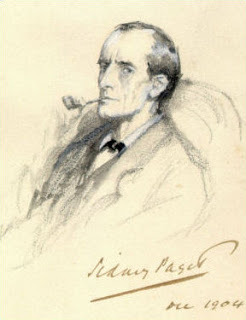
Graham Moore's The Sherlockian juxtaposes a modern-day mystery to be solved by an earnest young Sherlockian, Harold White, who has just been inducted into the premier Sherlockian society, the Baker Street Irregulars, and a period mystery in which the sleuth is none other than Arthur Conan Doyle, ably assisted by Bram Stoker, who found fame with Dracula. Holmes himself does not appear in The Sherlockian, but the book is a testament to our enduring, collective romance with the great detective. The existence of Sherlockian societies is a similar testament. Indeed, I briefly belonged to such a group many years ago when I lived in Wisconsin. We met in a cozy tavern appropriately called Sherlock's Home.
Our long-term fascination with Conan Doyles' creation puzzled even the author himself, who tried to kill Holmes off at the Reichenbach Falls only to feel compelled to bring him back to life for a further series of adventures after what came to be known as the Great Hiatus. Certainly more than the stories must be credited for such longevity, for there is something utterly captivating in the brilliant, maddeningly eccentric personality of Sherlock Holmes.
Another recent addition to the genre is a new British television series, Sherlock (shown on PBS), in which the dashing, improbably named actor Benedict Cumberbatch portrays a Holmes for the 21st century. Cumberbatch's detective captures all of the nuanced neuroticism so ably conveyed from 1984 to 1994 by Jeremy Brett. For many, Brett was the definitive Holmes. His interpretation was the most compelling of the second half of the 20th century, and he might have filmed the entire Holmes canon had he lived long enough. In the new Sherlock, Martin Freeman is quite believable as a serious, conflicted Dr. Watson.
Bringing Holmes into a contemporary era is a neat twist but nothing new. Another well-remembered Holmes and Watson duo, Basil Rathbone and Nigel Bruce, played not only the period mysteries but in a few set against the backdrop of World War II.
To be sure, Cumberbatch and Freeman are a more interesting pairing than the latest Hollywood big-budget foray into the canon, starring Robert Downey, Jr., and Jude Law as Holmes and Watson respectively. Their 2009 Sherlock Holmes seems more focused on special effects than telling a good story. Nonetheless, a sequel is said to be in the making.
There will be more of the Cumberbatch Holmes stories, too, thankfully. And doubtless someone at this moment is crafting yet another book somehow related to Holmes, this icon of the detection genre. With all of this enduring interest, we should be assured of many fine tales yet to come.
(The Sherlock Holmes illustration is by artist Sidney Paget, drawn in 1904.)
























